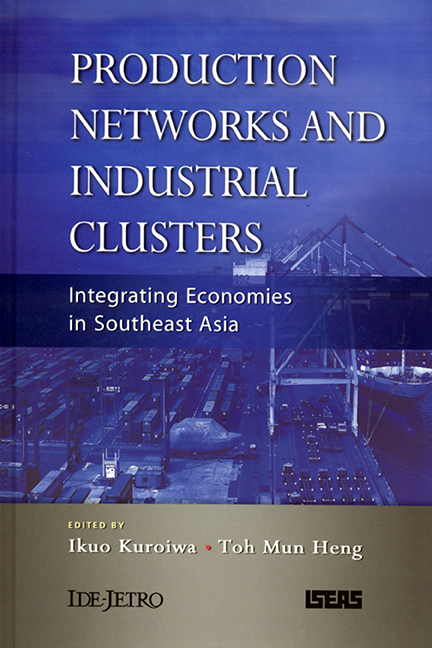Book contents
- Frontmatter
- Contents
- List of Tables
- List of Figures
- Preface
- Acknowledgements
- Contributors
- 1 Introduction
- I Overview of the Production Networks and Industrial Clusters in Southeast Asia
- II Case Studies
- 5 Industrial Clustering of Electronics Firms in Indonesia and Malaysia
- 6 The Biomedical Science (BMS) Industry in Singapore: Can It Plug into the Global Value Chain?
- 7 The Development of Automotive Industry Clusters and Production Networks in Thailand
- III Drivers for the Expanding Production Networks
- Index
7 - The Development of Automotive Industry Clusters and Production Networks in Thailand
from II - Case Studies
Published online by Cambridge University Press: 21 October 2015
- Frontmatter
- Contents
- List of Tables
- List of Figures
- Preface
- Acknowledgements
- Contributors
- 1 Introduction
- I Overview of the Production Networks and Industrial Clusters in Southeast Asia
- II Case Studies
- 5 Industrial Clustering of Electronics Firms in Indonesia and Malaysia
- 6 The Biomedical Science (BMS) Industry in Singapore: Can It Plug into the Global Value Chain?
- 7 The Development of Automotive Industry Clusters and Production Networks in Thailand
- III Drivers for the Expanding Production Networks
- Index
Summary
INTRODUCTION
The production and production capacity of automobiles in Thailand began to increase rapidly in the late 1980s after the appreciation of the yen. It then accelerated in the early 1990s due to the unprecedented economic boom and the government's liberalization policy. After a sharp decline during the 1997–98 economic crisis, production jumped sharply and surpassed the 1996 peak in 2002. Several car-makers have also expanded their production capacity as they had already made a strategic decision to use Thailand as one of their global production bases in the early 1990s. Although there are a number of studies discussing why Thailand became part of the global production network (GPN) of multinational car-makers, this paper will attempt to provide a systematic explanation, particularly a discussion of government policies that not only favoured Japanese carmakers, but may have also been indirectly influenced by the multinational companies concerned. Moreover, the paper will compare the structure of the production networks of two groups of major car-makers. This will allow the authors to draw some implications about the benefits of the GPN to Thai parts suppliers.
The second part of the paper addresses the role of clusters, particularly the creation of industrial districts (IDs). This paper will argue that until recently, the development of industrial districts in Thailand since the 1960s had always been concentrated around Klong Toey port in eastern Bangkok, which is only 120 kilometres from Laem Chabang port — a new but much larger seaport — in the eastern province of Chonburi. Such development has generated powerful agglomeration economy effects. Unfortunately, such huge agglomeration economies, which are one of the major forces that have prevented industrial development from spreading towards other regions of Thailand, have also generated severe congestion and pollution problems in Bangkok (Krongkaew 1995; Poapongsakorn and Fuller 1996). This has naturally forced manufacturers to locate their new plants along the eastern highways.
- Type
- Chapter
- Information
- Production Networks and Industrial ClustersIntegrating Economies in Southeast Asia, pp. 196 - 256Publisher: ISEAS–Yusof Ishak InstitutePrint publication year: 2008

